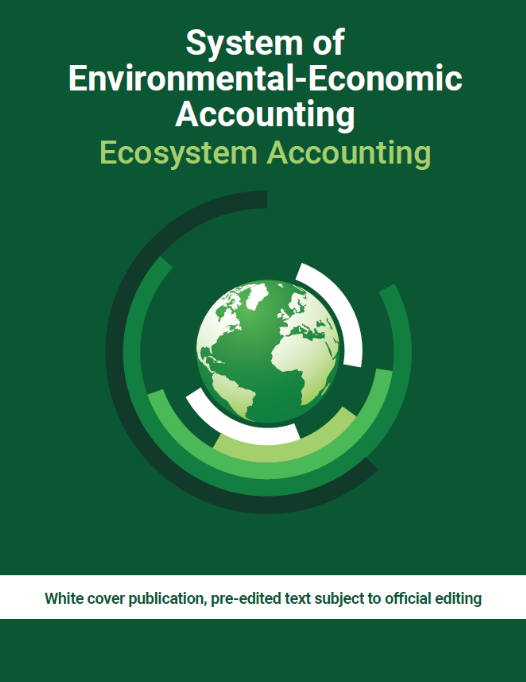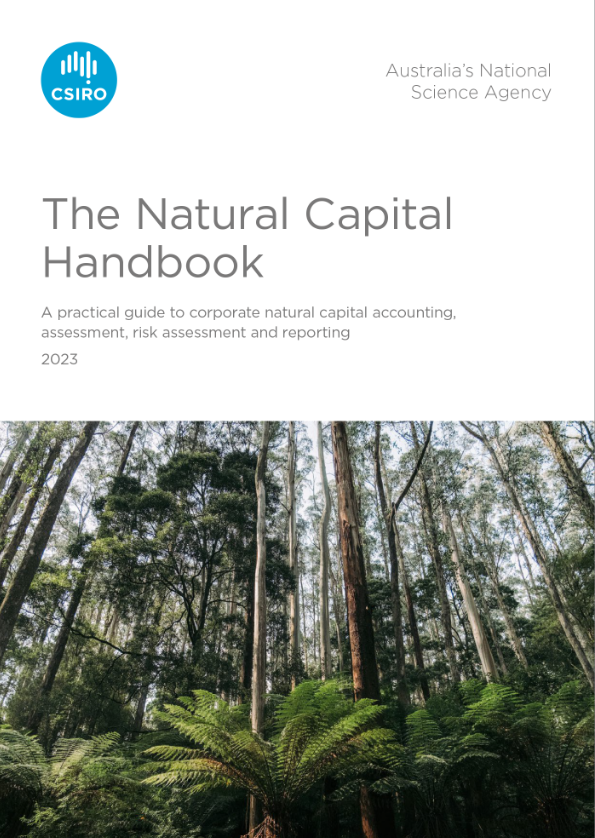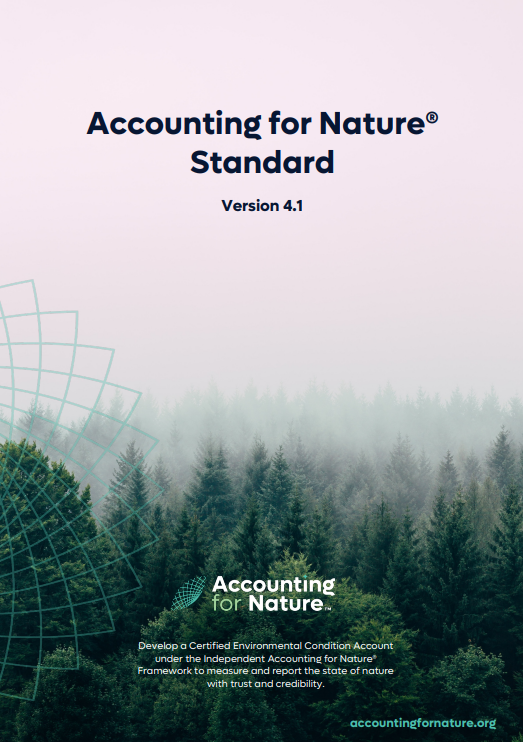Share this article
In this article we explore five key Natural Capital Accounting standards, building on our previous discussion about the transformative nature of Natural Capital Accounting and its capacity to measure the value of nature. We dig into the key natural capital standards such as the Natural Capital Protocol, the System of Environmental Economic Accounting, Science Based Targets for Nature and more. We also explore why companies should adopt natural capital accounting, emphasising its role in driving sustainable practices, by quantifying impacts on natural resources.
What is Natural Capital Accounting?
Natural Capital Accounting (NCA) is an umbrella term for an accounting framework that provides a systematic way to measure and report on natural capital stocks and flows.
The concept underlying NCA is the fact that nature, outside of its own system and inherent value, is a source of raw materials used for a variety of production and business operations.
Nature and its resources or capital, therefore, supports human well-being through the supply of goods and services, including: clean water, soils and valuable natural resources.
Accordingly, such assets and resources must be well maintained and managed, with economic contributions better integrated into commonly applied sustainability reporting frameworks to enable more comprehensive and informed decision-making. This integration helps ensure that the true value of natural capital is recognised and preserved, promoting sustainable practices and long-term environmental health.
What standards can you use to undertake Nature Capital Accounting?
Despite the new and emerging nature of the sector, there currently exists a number of national and international Natural Capital Accounting standards and protocols. These include:
- The Natural Capital Protocol
- System of Environmental-Economic Accounting 2023 (Central Framework)
- CSIRO’s The Nature Capital Handbook
- British Standard’s BS 8632: Natural Capital Accounting for Organisations – Specification
- Science Based Targets for Nature (SBTN)
- Accounting for Nature.
Depending on the approach, an NCA assessment may comprise of accounting for individual environmental assets or resources, and/or accounting for ecosystem assets, biodiversity and ecosystem services.
All approaches are underpinned by a ‘physical’ natural capital assessment, which can be extremely useful in supporting analysis, monitoring and decision-making. Following from this, a monetary valuation component of a NCA is possible but by no means mandatory.
The critical aspect is that the NCA enables the integration of the flow and valuation of ecosystem services.
The outcomes of NCA can be subsequently incorporated into existing reporting and target-setting frameworks, such as the Taskforce for Nature-related Financial Disclosures (TNFD) and Science Based Targets for Nature (SBTN).
Five key Natural Capital Accounting Standards
1. The Natural Capital Protocol
The Natural Capital Protocol (NCP) is a decision-making framework that enables organisations to identify, measure and value their direct and indirect impacts and dependencies on natural capital. The Protocol aims to support better decisions by including how we interact with nature, or more specifically natural capital, in decision making.
The Protocol offers a standardised framework to identify, measure, and value impacts and dependencies on natural capital. It builds on a number of approaches that already exist to help business measure and value natural capital, including the Corporate Ecosystem Services Review and the Guide to Corporate Ecosystem Valuation.
The Protocol does not, however, explicitly list or recommend specific tools or methodologies. This is because the choice of tools will be dependent on business context, resources, and needs.
The Protocol focuses on improving internal decision-making. It is not a formal reporting framework and does not assume or require that assessment results are reported or disclosed externally. Nevertheless, some companies may wish to report their assessment findings and this is encouraged as a means to demonstrate risks, opportunity and value creation to stakeholders.
It is important to note that while the Protocol does provide a standardised process, it also remains flexible in the choice of measurement and valuation approaches used, which means that results may not be comparable within or between different businesses and applications. Nevertheless, the Protocol does provide the foundation for future work around comparability in natural capital reporting and standard setting.
2. System of Environmental-Economic Accounting 2023 (Central Framework)

The System of Environmental Economic Accounting (SEEA) is the accepted international standard for environmental-economic accounting, providing a framework for organising and presenting statistics on the environment and its relationship with the economy. It brings together economic and environmental information in an internationally agreed set of standard concepts, definitions, classifications, accounting rules and tables to produce internationally comparable statistics.
The SEEA Central Framework brings together, in a single measurement system, information on water, minerals, energy, timber, fish, soil, land and ecosystems, pollution and waste, etc. The SEEA Central Framework is made up of a number of different accounts, all of which are integrated, and which draw information together into one coherent system. This is done by applying the same accounting concepts, structures, rules and principles to different sets of environmental information. Because these concepts are aligned with those of the System of National Accounts, this environmental information can then be integrated with economic information.
3. CSIRO – The Nature Capital Handbook

CSIRO has developed a practical how-to handbook that delivers a practical step-by step guide for Australian companies and landowners on how to measure and incorporate natural assets such as clean air, water, soil and living things into their financial books.
Drawing upon existing standards and frameworks for national-level accounting under the UN System of Environmental Economic Accounting (SEEA) framework, the handbook aligns with existing corporate financial reporting equivalents to identify environmental loss and gains. It also connects the concept of natural capital accounting – a systematic accounting framework to measure and report on stocks and flows of natural capital that recognises the economic, ecological and social value of the environment.
The Natural Capital Handbook harmonises resources, frameworks, and indicators to help Australian businesses across all sectors measure, track and manage their natural capital assets to make informed decisions on nature-related risks and invest in nature-positive opportunities to help reverse ongoing environmental declines.
It is a free resource for businesses across all sectors on how to report and account for their natural assets to foster more sustainable and responsible corporate activity that better protects our environment.
4. British Standard BS 8632: Natural Capital Accounting for Organisations – Specification
This standard provides organisations with a deeper understanding of how their operations impact and depend on natural capital assets like geology, soil, water, air and living organisms, to underpin decision-making.
The standard presents terminology, principles, steps, and outputs for creating a natural capital account to enable a transparent and repeatable practice. This includes the minimum requirements for defining the boundary of an account, material impacts and dependencies, and documenting the data and process used.
Creating robust information can help an organisation:
- identify its impacts and dependencies on natural capital assets, and associated risks and opportunities;
- communicate information and implications within the organisation and with external stakeholders;
- make more informed business strategies and operational decisions by integrating natural capital accounts with assessment of other capitals; and
- monitor and evaluate the impacts and effectiveness of internal decisions and changes due to external factors.
5. Accounting for Nature Standard

Accounting for Nature works with farmers, indigenous land managers, private conservation organisations, businesses, impact investors, governments and regional natural resource management organisations to implement the Accounting for Nature® Framework – a world-leading, scientifically rigorous methodology for measuring environmental condition.
Accounting for Nature® is a transparent, affordable, verifiable and certifiable environmental accounting framework to inform better investment, policy and management decisions in natural capital. These include carbon co-benefits, green bonds, environmental offsets and impact investments.
Measures of environmental condition can be used to understand whether actions are improving or degrading natural capital. They are critical for guiding investment in sustainable land and sea management. The Accounting for Nature® Framework sets the overarching Standard for measuring the trend in ecological health for different environmental assets (e.g. agricultural soils, native vegetation, fauna) in a cost-effective, scientifically robust, fully transparent and verifiable way.
The Accounting for Nature® Framework has been tried and tested over a decade at both property (enterprise) and ecosystem (regional) scales – a collaborative effort by around 200 world-leading experts.
Why undertake Natural Capital Accounting?
Natural capital provides goods and services that contribute directly and/or indirectly to a country’s economic output and sets the ecological boundaries for socio-economic systems within and between countries. As such, humans are currently producing and consuming goods and services largely at the expense of natural capital.
With nature considered as a critical asset or capital stock, the global decline of nature therefore indicates a potential future global asset management problem. The food and beverage, agriculture and fisheries, and construction industries present some of the highest dependencies with nature and will therefore be the most exposed.
Despite an invaluable contribution to the economy and hence society, natural capital and its related ecosystem services, are not priced in the markets of these sectors. The reason for this is that they are often ecosystems and/or services that are considered as public goods.
The result, however, is that there are negligible or insufficient economic incentives for producers and consumers alike to protect, sustainably use and restore nature.
By quantifying and mapping out impacts and/or dependencies of a business portfolio on surrounding and related natural resources, Natural Capital Accounting can provide a concrete framework for valuing nature assets and integrating them with performance reporting.
Future focused organisations should be exploring the concept of natural capital accounting and taking the initiative to assess the ecological health of environmental assets relevant to them, such as agricultural soils, native vegetation, and fauna.
Producing natural capital accounts can be used to guide sustainable practices, enhance reporting accuracy, and support long-term environmental stewardship. This will also not only help in safeguarding vital ecosystems but also align business strategies with sustainability goals, driving both ecological and economic benefits.
Interested in measuring your natural capital or how you can apply the key natural capital accounting standards?
We support companies in measuring their natural capital and reporting under the Natural Capital frameworks. Contact us for guidance today we’d love to help email.


